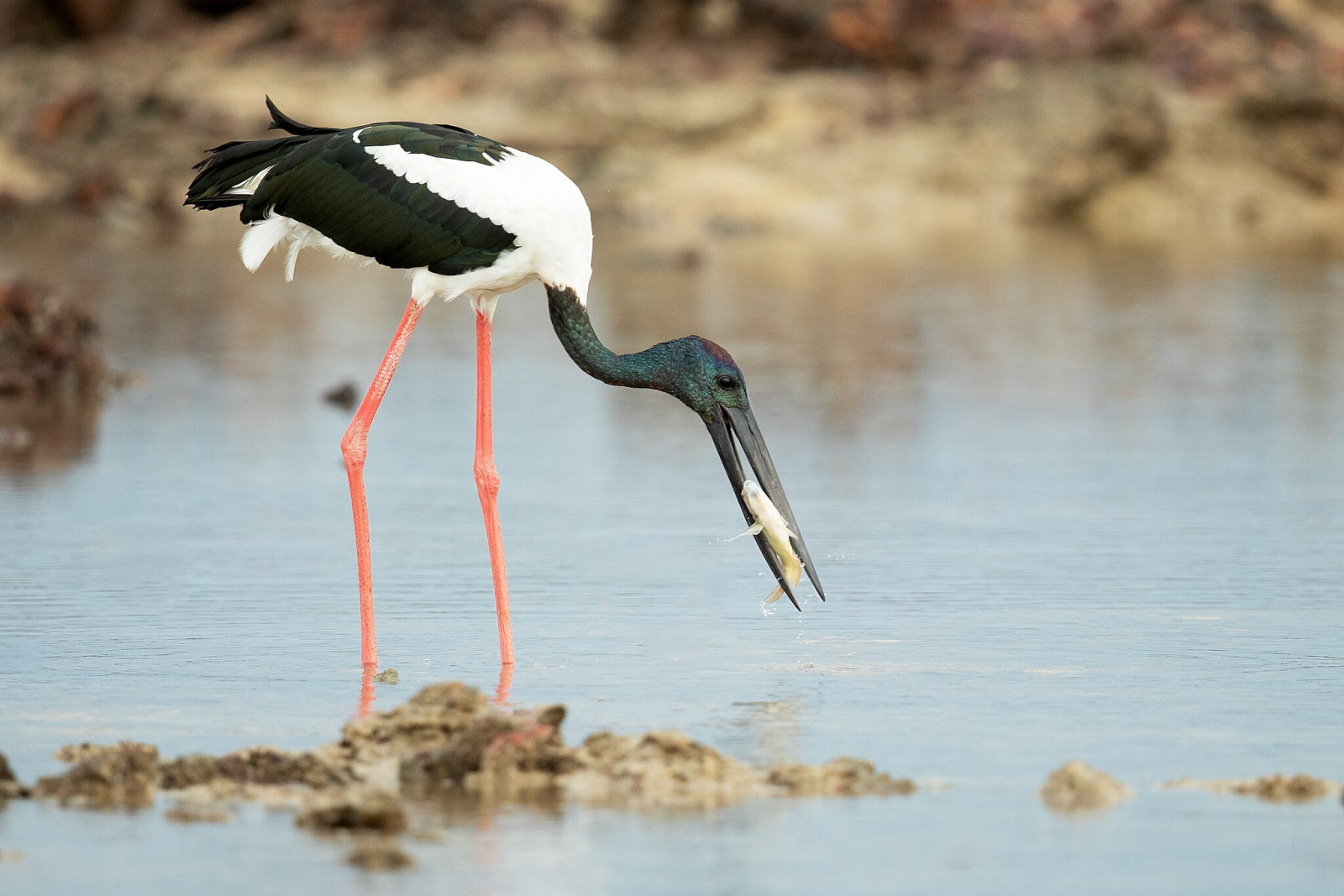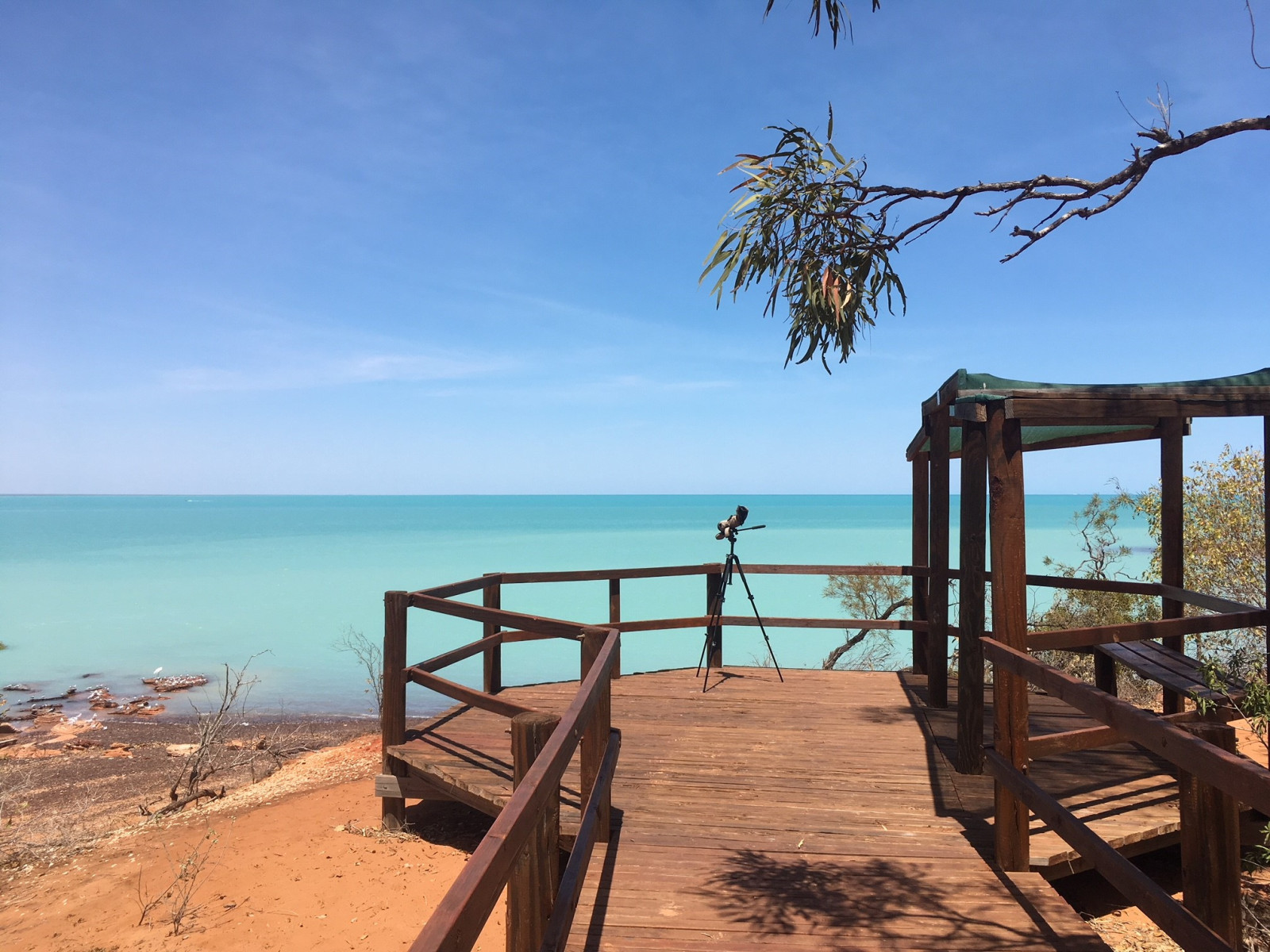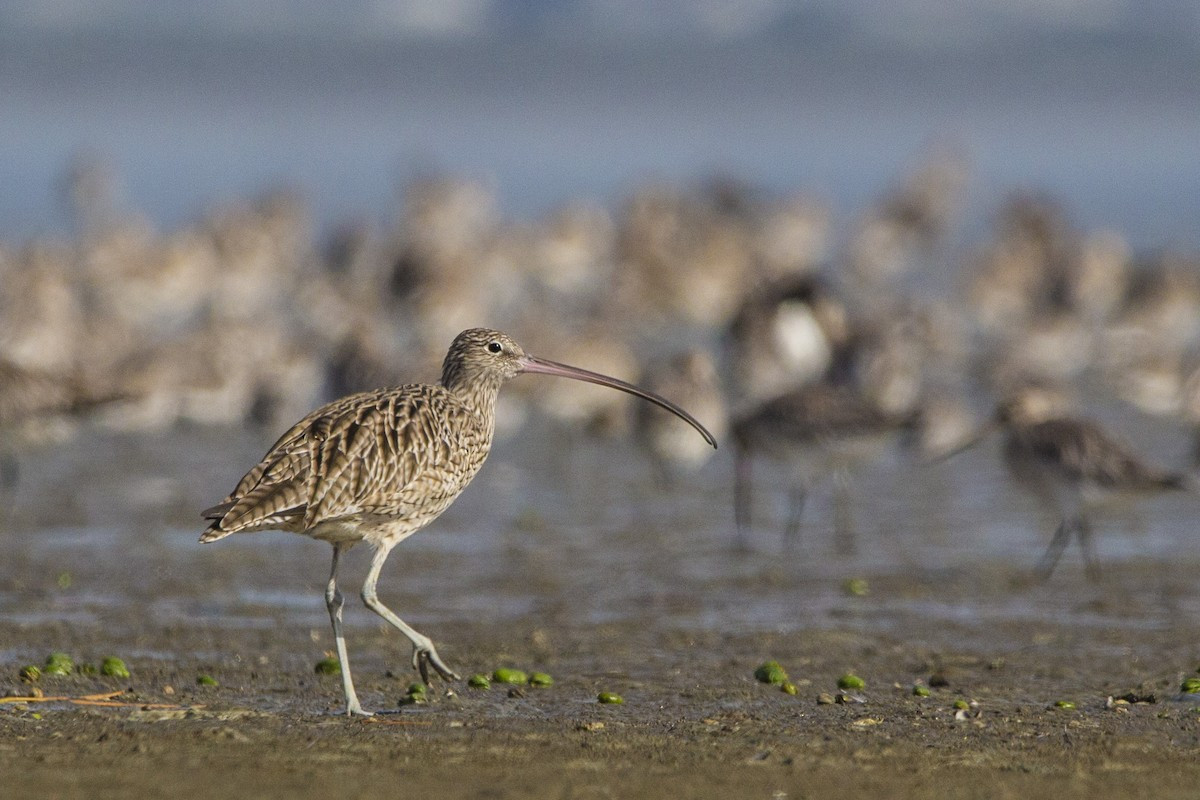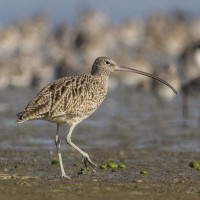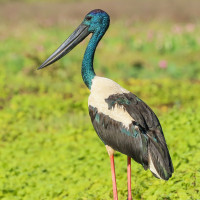Beschreibung
Broome Bird Observatory is one of Australia's best birdwatching spots. An estimated 150,000 shorebirds from more than 50 species visit Roebuck Bay’s mangrove-dotted shorelines each year. Situated on the mudflat shores massive migratory flocks of waders can be observed. Between March and May, breeding adults can be seen most evenings leaving the bay to the northern hemisphere. Many species nest north of the Arctic Circle. They return between August and October, and their young follow shortly after. These young birds then stay in the bay for over a year before making their first migrations, and this means you can see migratory shorebirds in Broome all year round.
A day spent here can take you across mudflats, ocean, mangroves, beaches, floodplains, saltmarsh, savanna, desert scrub and pindan woodlands. 336 bird species have been recorded in Broome to date - a third of Australia’s total! Different species vary depending on seasonal change. Highlights include Yellow Chat, Australian Bustard, Far Eastern Curlew, Black-necked Stork (Jabiru), Oriental Pratincole, Common Redshank, Great Bowerbird, Brolga, Eastern Yellow Wagtail, Dusky Gerygone, Flock Bronzewing, Red-headed Honeyeater and Asian Dowitcher.
Details
Zugang
Broome Bird Observatory is located at the end of Crab Creek Road, on the shores of Roebuck Bay, approximately 25 km east of Broome. Drive 10 km out of Broome along the Broome Highway. You will pass the Cape Leveque turnoff on your left and continue for approximately 1.5 km where you will see Crab Creek Road on your right. There is a blue sign for Crab Creek Road and the Observatory at this turn-off. The road begins as bitumen and turns into red dirt. Crab Creek Road is a red dirt road for 15 km. The site is open 7 days a week between February and mid-December. A 4WD vehicle is recommended at all times of year, and Crab Creek Road often closes due to flooding during wet season rains (Nov-April), stopping all access to the Observatory. Visitors can check the Broome Bird Observatory website (see link below) for latest road conditions. Expect the last 6 km of the drive to be rough. From Broome it takes about 40 minutes for the total trip by car..
Entry is free, but donations are welcome (and well used by this not-for-profit organisation). Accommodation & facilities: The observatory has basic units, a self-contained cottage, unpowered campsites and a well-equipped camp kitchen, education facilities and a library. There is also a visitor centre, the Clive Minton Discovery Centre, entry is $ 10. Broome Bird Observatory offers birdwatching and nature tours to diverse habitats. For example the 'Shorebird Tour', the 'Mangrove Tour' or the 'Bush and plains Tour'. Prices from $ 80 pp (2023). See the link to the website below for more info on tours, bookings, accommodation and prices.
You can drive or walk along the coast and make different stops. There are also walking trails: the Spinifex Trail is a flat easy 1.7km loop starting near the camp kitchen at the Broome Bird Observatory (Shadehouse). This directionally marked trail through savannah woodland is especially good in early morning before the day heats up. The Malurus Trail leads from the observatory along the fence line for about 3 km to Crab Creek.
Terrain und Habitat
Feuchtgebiet , Strand , Schlammflächen , Vereinzelte Bäume und Büsche , MeerBedingungen
Flach , Hochwasser möglich , Offene LandschaftRundweg
NeinIst ein Spektiv nützlich?
JaGute Beobachtungszeit
GanzjährigBeste Beobachtungszeit
Frühjahrszug , HerbstzugRoute
Normaler Weg , unbefestigte StraßeSchwierigkeitsgrad der Tour
EinfachErreichbarkeit
zu Fuß , AutoBeobachtungshütten oder -türme
NeinZusätzliche Informationen
Photo Black-necked Stork by JJ Harrison (www.jjharrison.com.au), CC BY-SA 4.0, via Wikimedia Commons
Links
- www.Broomebirdobservatory.com
- Tides Table
- Broome Bird Observatory on eBird
- Birdlife WA 'downloadable' birding guides.
